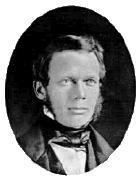This timeline of music in the United States covers the period from 1850 to 1879. It encompasses the California Gold Rush, the Civil War and Reconstruction, and touches on topics related to the intersections of music and law, commerce and industry, religion, race, ethnicity, politics, gender, education, historiography and academics. Subjects include folk, popular, theatrical and classical music, as well as Anglo-American, African American, Native American, Irish American, Arab American, Catholic, Swedish American, Shaker and Chinese American music.
(Text) CC BY-SA

